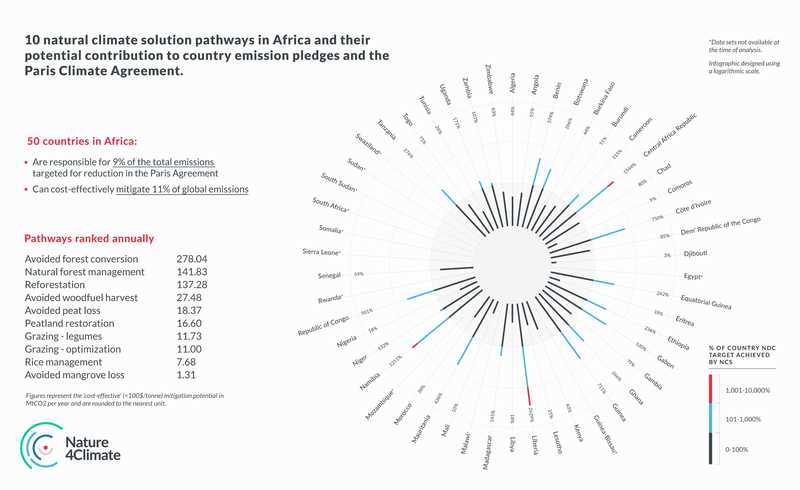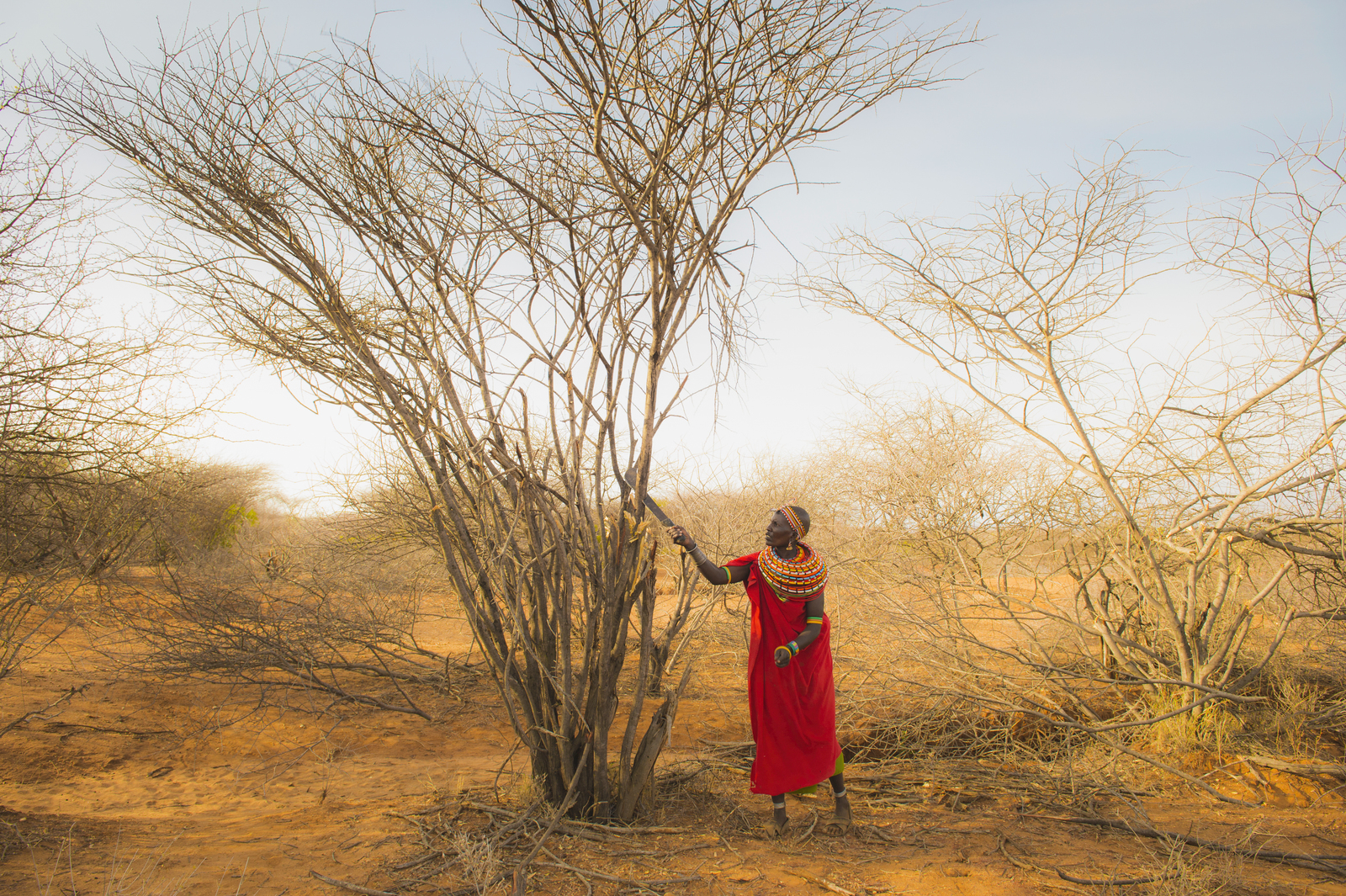
Africa covers about one-fifth of the total land surface of Earth. Not only is it a power house for nature, it could also be a powerhouse for natural climate solutions. Our N4C mapper shows that Africa could reduce its greenhouse gas emissions by 22% by deploying cost-effective natural climate solutions.
Africa covers about one-fifth of the total land surface of Earth. Not only is it a power house for nature, it could also be a powerhouse for natural climate solutions. Our N4C mapper shows that Africa could reduce its greenhouse gas emissions by 22% by deploying cost-effective natural climate solutions.
Africa, the second largest continent after Asia covers about one-fifth of the total land surface of Earth. It certainly packs a punch; the continent represents 20% of the total global tropical forests and 13% of Africa’s landmass is covered by rainforest. Not only is it a power house for nature, it could also be a powerhouse for natural climate solutions.
Our N4C mapper shows that Africa could reduce its greenhouse gas emissions by 22% by deploying cost-effective natural climate solutions. That matters because the more than 50 countries in Africa are responsible for 9% of the total emissions targeted for reduction in the Paris Agreement. It can also cost-effectively mitigate 11% of global emissions.
Added to that, many countries in Africa could actually exceed their national country pledges through natural climate solutions alone. This could be an opportunity for further investment by the international community and a way to scale up ambition in a continent with comparatively low emissions and large land potential.

Download the infographic here.
This wouldn’t just be good for the climate, but for people and wildlife too. According to the World Bank Forest Action Plan, forest-related income in Africa lifts 11% of rural households out of extreme poverty. Forests also supply critical raw materials needed to grow the economy, provide habitat to wildlife, regulate water flow and sequester carbon. Estimates of the numbers of forest dwelling indigenous people in Central Africa vary from between 130,000 and 920,000, and itis widely accepted that these landscapes are home to approximately 150 distinct ethnic groups.
Is Africa on the right track? The Food and Agriculture Organization of the United Nations estimates that between 2010 and 2015, Africa had the highest net annual loss of forests. The Continent lost 2.8 million hectares of forest every year, equivalent to the size of Guinea Bissau, or nearly the size of Belgium. Between 1990-2008, it has been estimated that the deforestation in Sub-Saharan Africa represented 31% of global forest loss.
Up to 90% of West Africa’s coastal rainforest has been felled already, and the rate of deforestation in the Congo Basin has doubled in the past 25 years. Agriculture including small-scale subsistence farming and large-scale commodity agriculture production, especially: palm oil, cocoa, rubber, and sugar. Projections to 2030 suggest that 15% of current production forests in Africa are likely to be converted for agricultural use.
Many countries in Africa have the potential to become leaders in natural climate solutions. To do this, they would need to put measures in place to minimize the negative impact on land and water from agriculture, focus on creating healthy soils, conserving habitat, and reforesting on a large scale. It’s not easy but the potential and opportunity is there.

The Africa Forest Carbon Catalyst in East Africa – developed by TNC and partners – is a good example of what’s possible. It is an investment vehicle tailored to the needs of governments, companies and smallholders alike – providing finance at an affordable rate over a timescale that matches that of tree-growing. African countries have yet to make adequate progress in meeting their pledge of restoring 100 million hectares of degraded land by 2030. At the same time, Africa accounts for 22 percent of global wood consumption and many parts of the continent face a huge wood shortage as population and economic growth drive the need for energy, construction materials and furniture. One problem is lack of financing options. Because there is a long gap between investment (in tree planting) and return (in sale of wood products), few institutions are able to provide finance for commercially grown trees.
The Africa Forest Carbon Catalyst demonstrates how simple incentives and financing schemes can unlock a market that is already there. Such opportunities exist everywhere. Natural climate solutions could be made tangible and real all over Africa too.
N4C is calling on African leaders and champions to take a look at the N4C mapper and see how to increase land commitments under their national climate pledges to see how healthier forests, soil and grazing lands could help not only reduce carbon but also restore and rebalance natural carbon cycles while securing food, help create jobs, secure freshwater and build resilience in the system against climate change.